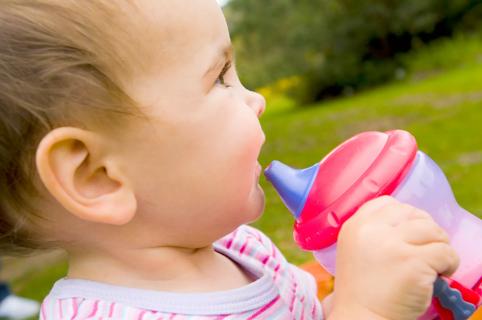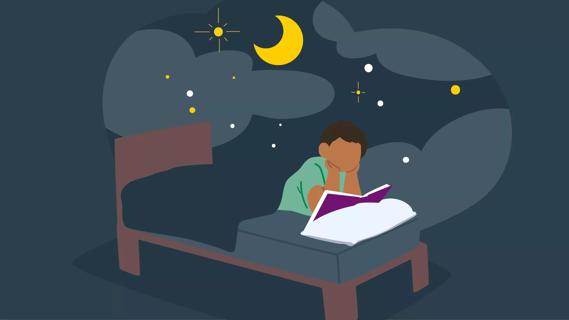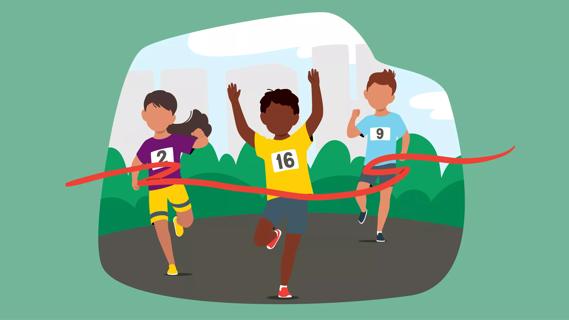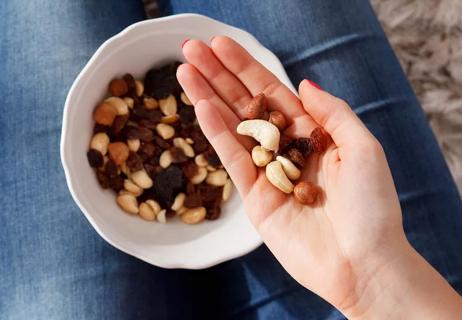Advertisement
Is There a Way To Stop Growing Pains?
You can treat these short-lived symptoms with a warm bath or massage

Growing pains in kids tend to grab the attention of parents. Unexplained suffering of your child in the middle of the night just has that effect.
Advertisement
Cleveland Clinic is a non-profit academic medical center. Advertising on our site helps support our mission. We do not endorse non-Cleveland Clinic products or services. Policy
These alarming aches can appear suddenly and intensely in sleeping children, with pain levels often registering high enough to jolt them awake. Screaming and tears aren’t uncommon reactions.
Thankfully, the pain typically disappears quickly and without any lingering issues … but that doesn’t mean there aren’t a few curious questions about what happened.
Let’s get some answers from pediatric physical medicine specialist Lainie Holman, MD.
What are growing pains?
Growing pains are often described as a short-lived cramping or throbbing pain, most often (but not always) in the legs. The sporadic aches usually rear up at night without any warning. They’re very common, too.
And with all of that being said, growing pains are also very misunderstood and loosely defined. It seems folks use the term to explain many signs of discomfort.
There’s no clarity in medical research regarding a cause for growing pains, either.
“Any explanation of growing pains is usually very broad,” says Dr. Holman. “We know they happen, of course, but there’s a lot of inconsistency on how growing pains are reported and the associated factors.”
Who gets growing pains?
By some estimates, nearly half of all kids experience growing pains at some point during childhood — usually between the ages of 3 and 12. It doesn’t seem to have a prevalence in boys or girls, either, says Dr. Holman.
What causes growing pains?
The honest answer? We don’t really know.
Advertisement
The name itself appears to be a misnomer, as there’s no evidence that a sudden growth spurt kick-starts the pain. The unexplained aches do appear during ages when kids grow like weeds, though.
“It’s associated with growing because it comes at a time when people are growing the most, but it doesn’t seem to have anything to do with actual growth,” notes Dr. Holman.
For the record, the term “growing pains” originated in 1823 in a book titled Maladies de la Croissance (which translates to “Diseases of Growth”). French physician M. Duchamp coined the phrase.
To be more accurate these days, physicians have tried using names like “benign nocturnal limb pains of childhood” or “recurrent limb pain of childhood.” Those monikers don’t seem quite as catchy as the original.
Can activity lead to growing pains?
Growing pains often follow busy days of kids running, jumping, playing and just being … well, kids. “That lends credence to theories that there is some sort of musculoskeletal or muscle fatigue underlying the pain,” says Dr. Holman.
Again, though, there’s no real scientific evidence to link activity to growing pains. Plus, the truth is they can appear after inactive days, too.
Where do growing pains occur?
Growing pains typically zero in on the legs — and it could be anywhere from your waist down. The cramping may zing your child’s thighs, for instance. The aches could settle in their calf or shin. Or maybe behind the knee.
“Most of the time, the location is pretty random,” says Dr. Holman. “What’s described as growing pains don’t just appear in one area.”
Aside from the legs, growing pains may also pop up as:
- Arm pain anywhere from the shoulder to the hand.
- Chest pain. “That can be very alarming to families,” notes Dr. Holman.
- Headaches.
Do growing pains have other symptoms?
Growing pains have just one symptom. “It’s just pain that’s episodic, so it self-resolves,” states Dr. Holman. “It doesn’t come with fevers, rashes or chills.”
Tips to treat growing pains
The good news is that growing pains often disappear within five to 10 minutes … though, that’s certainly not quick enough for any parent watching their child suffer. “Seeing our child in pain in the middle of the night is scary,” says Dr. Holman. “Being brief doesn’t make it less alarming.”
To help your child find relief, Dr. Holman offers these suggestions.
- Stretching or massaging. “A little bit of pressure on the area with the pain may help,” says Dr. Holman. “Plus, there’s value in a comforting touch.”
- A warm bath. The warm water can help relax muscles. Another bonus? It’s also a welcome distraction. (Don’t be surprised, though, if the pain actually stops before the tub is full.)
- Give them a pain reliever like children’s acetaminophen (Tylenol®) or ibuprofen.
Advertisement
Should you call your child’s pediatrician?
If growing pains continue for several nights in a row or are focused on one particular spot, a call to the pediatrician is reasonable, says Dr. Holman. They may want to check for an injury or some other cause of the pain.
Make an appointment, too, if there are other symptoms like fevers, rashes, weight change, mood swings or new trouble in school.
“Don’t just assume that it’s growing pains if there is much more going on,” advises Dr. Holman.
Can growing pains be prevented?
There’s only one known way to prevent growing pains: Age out of them.
“It’s a part of childhood for many people,” reassures Dr. Holman. “As long as the pains aren’t interfering with your child’s ability to function with school or sports or around the house, there isn’t any reason to be alarmed.”
Advertisement
Learn more about our editorial process.
Advertisement
Related Articles

What Causes Growing Pains in Your Child’s Arms or Legs?
Facts on nighttime pain from a pediatrician

Asperger’s vs. Autism: What’s the Difference?
Both terms have been replaced by autism spectrum disorder (ASD)

The Teen Mental Health Crisis: How To Help Your Child
American teens are facing unprecedented rates of depression and suicide, but you can be there to support and help them

How To Help Children With Restless Legs Syndrome
Regular exercise, an iron-rich diet, adequate sleep and bedtime routines that include a warm bath or massage may help with your kid’s RLS

What To Know About Baby’s Fontanelles (aka Soft Spots)
A sunken soft spot may be a sign of dehydration, while a bulging soft spot may be a sign of head trauma

Baby Steps: Tips to Transition From Formula to Milk
Slowly introducing cow’s milk (or soy milk) can help your child make the change

Nighty-Night: Tips To Get Your Kid To Stay In Bed
A consistent, structured routine, which may include incentives, can help children learn to stay in bed and get the ZZZs they need

Is Your Child Old Enough To Run a 5K?
Let your little one’s enthusiasm and motivation fuel their interest in running, but don’t pile on miles too early
Trending Topics

Here’s How Many Calories You Naturally Burn in a Day
Your metabolism may torch 1,300 to 2,000 calories daily with no activity

5 Sinus Massage Techniques To Relieve Pressure and Promote Drainage
A gentle touch in all the right places may help drain your sinuses
